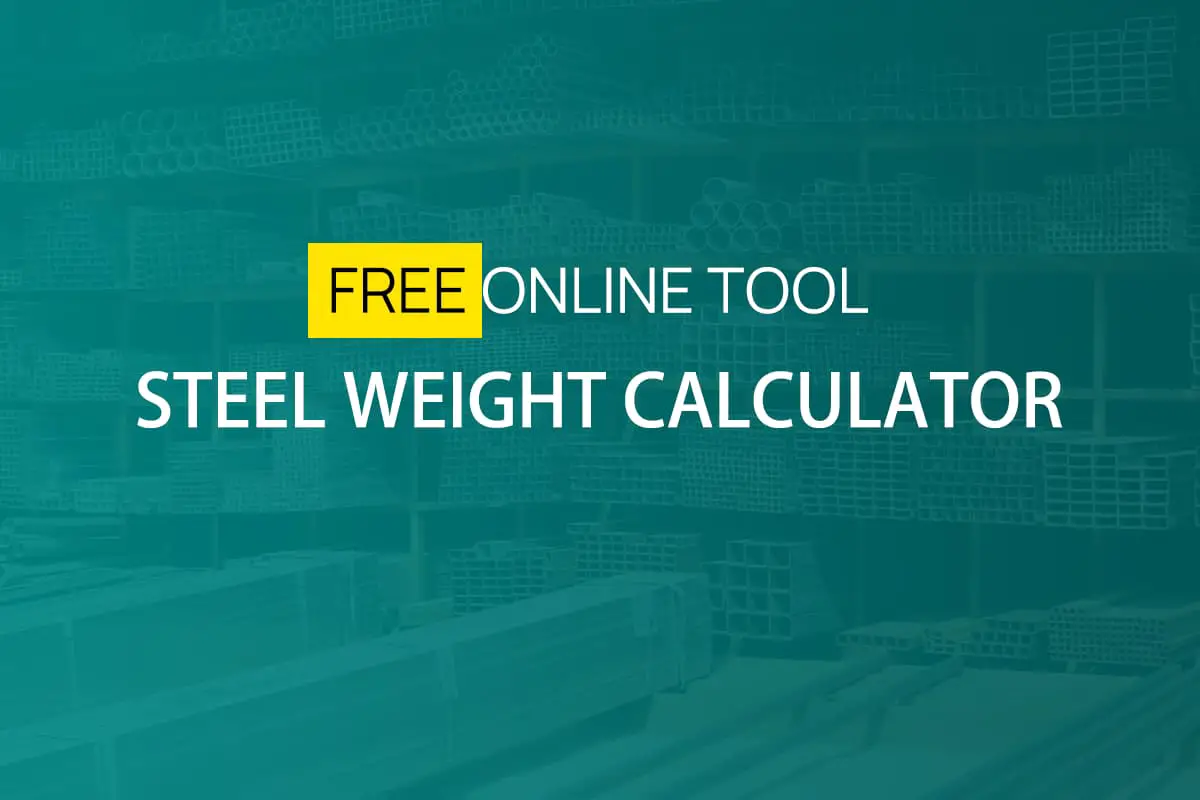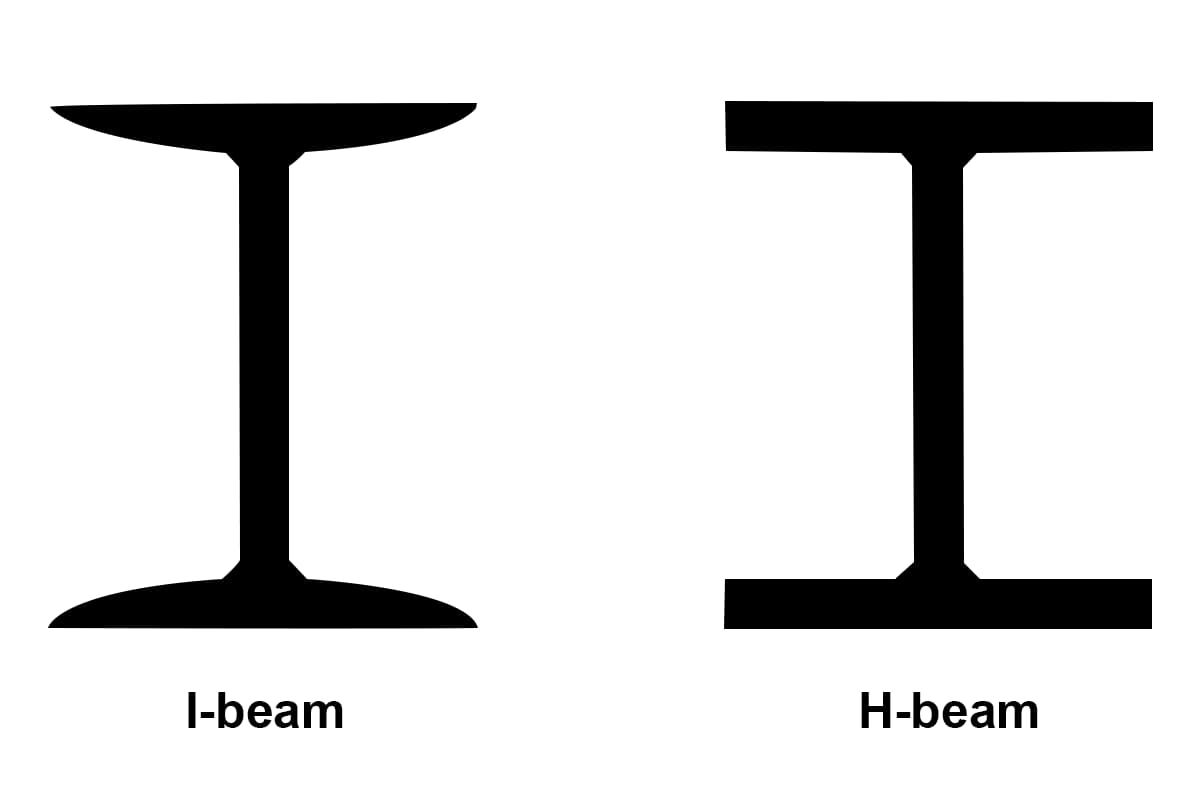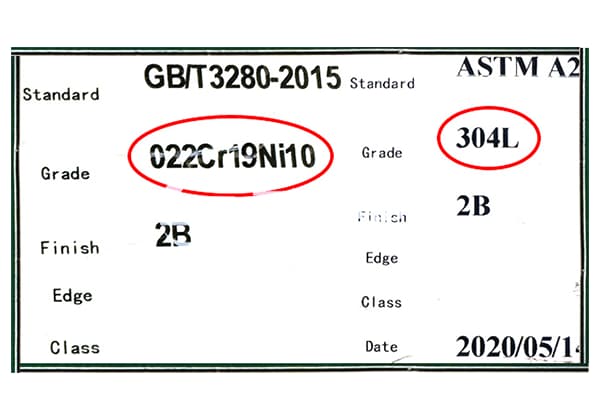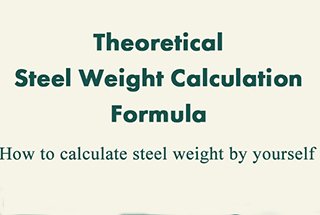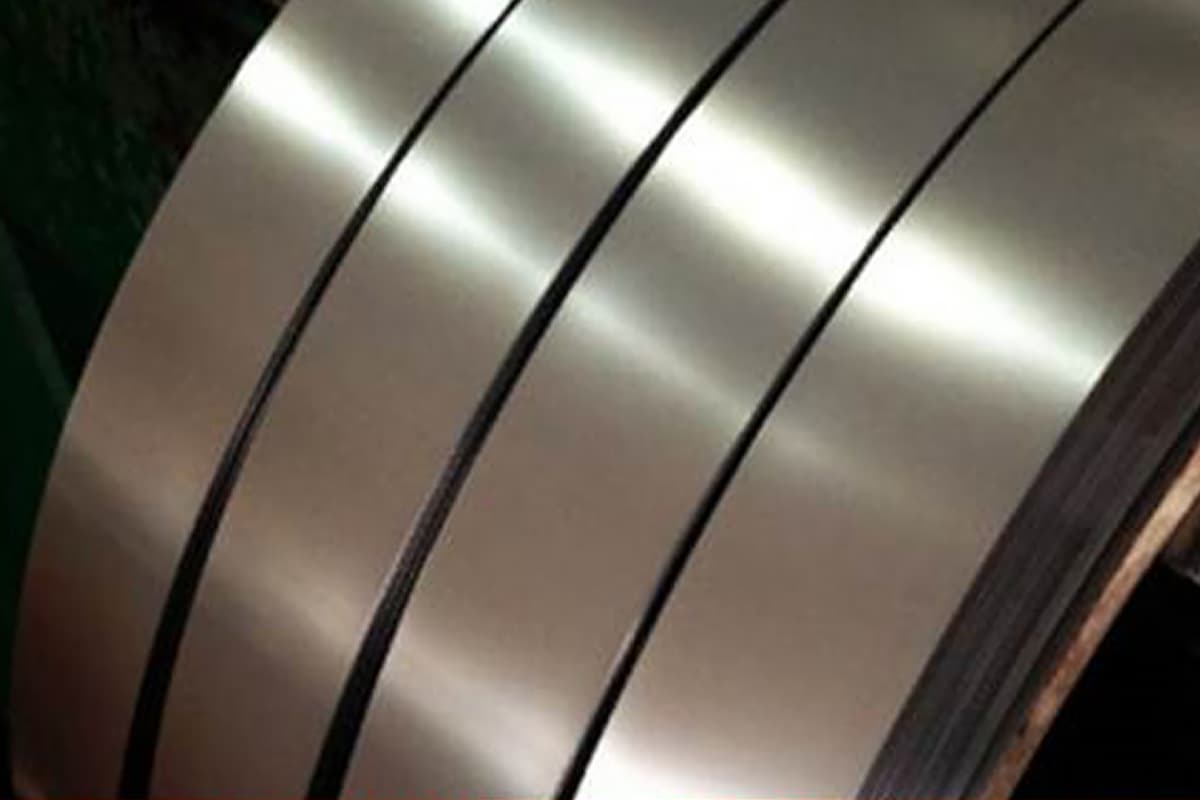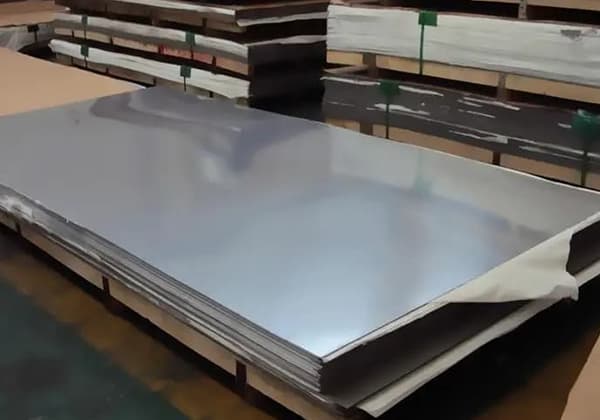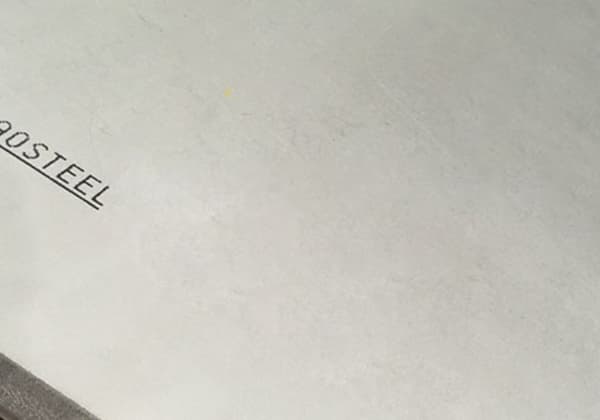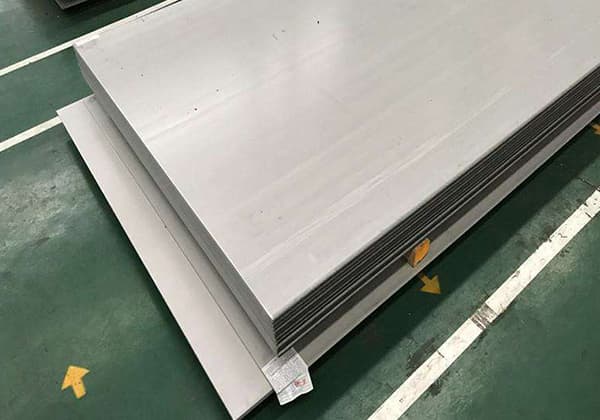
Ever wondered how steel plates and sheets shape the world around us? This article explores their critical roles in construction and manufacturing. Drawing from expert insights, discover the types, applications, and advantages of these essential materials. Get ready to enhance your understanding of the backbone of modern engineering.
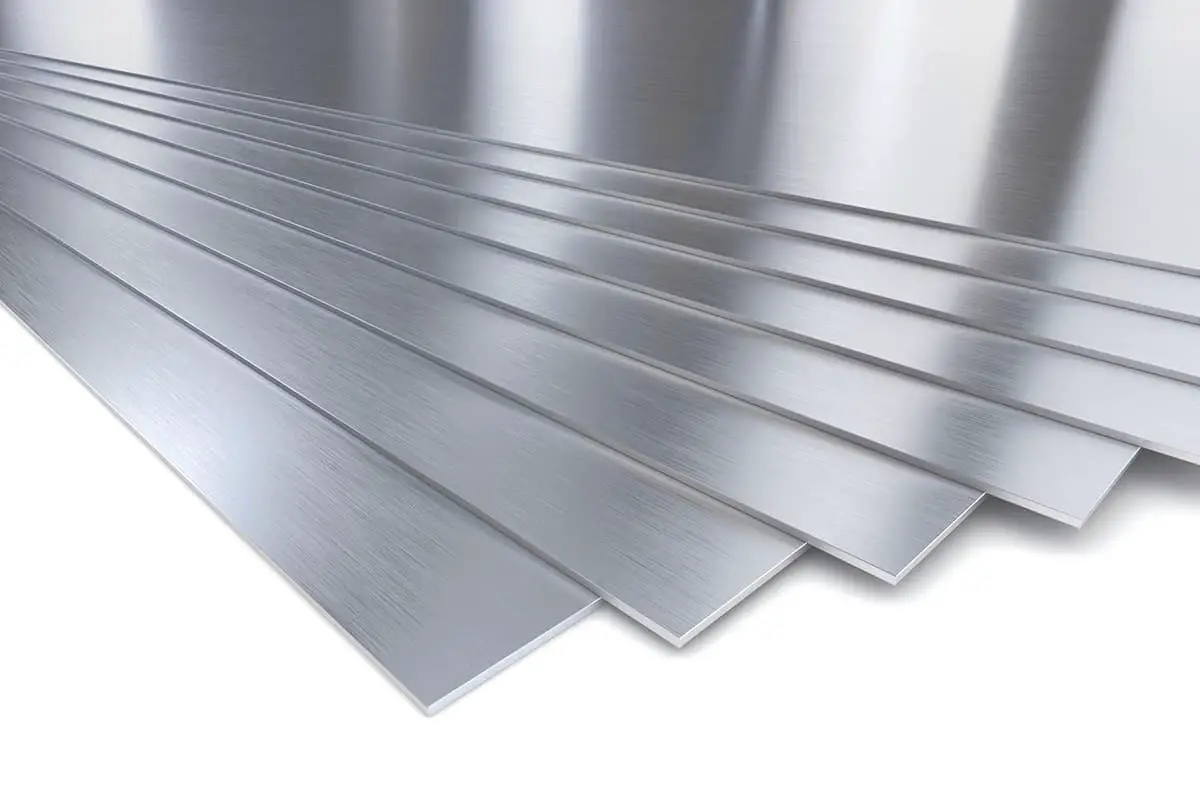
Steel plates are flat-sectioned steel materials with a significantly greater width-to-thickness ratio, widely used in industrial applications. Steel plates can be categorized into medium-thick and thin based on their thickness.
Steel strips are long, thin plates with a narrow width, mostly supplied in rolls. Specifications for steel plates are expressed in thickness * width * length (or roll) in millimeters.
(1) Medium-thick steel plates:
Steel plates with a thickness greater than 4mm are classified as medium-thick steel plates. Within this category, plates with a thickness of 4.5-25.0mm are called medium-thick plates, those with a thickness of 25.0-100.0mm are known as thick plates, and plates with a thickness exceeding 100.0mm are referred to as extra-thick plates.
Currently, most medium-thick steel plates are produced via hot rolling, and can be divided into ordinary and high-quality medium-thick steel plates.
(2) Ordinary medium-thick steel plates:
These are hot-rolled steel plates made from ordinary carbon structural steel or low-alloy structural steel. They mainly include ordinary carbon boiling steel plates, ordinary carbon calming steel plates, low-alloy steel plates, bridge steel plates, shipbuilding steel plates, boiler steel plates, pressure vessel steel plates, patterned steel plates, automobile beam steel plates.
(3) High-quality medium-thick plates:
These are hot-rolled steel plates made from various high-quality steels. Based on material and application, they are divided into high-quality carbon structural steel plates, carbon tool steel plates, alloy structural steel plates, alloy tool steel plates, spring steel plates, bearing steel plates, high-speed tool steel plates, stainless steel plates, 90-series steel plates, bulletproof steel plates, pure iron plates, high-pressure steel plates, weather-resistant steel plates, pressure-resistant steel plates, low-magnetic steel plates.
The most commonly used are high-quality carbon structural steel plates and stainless steel plates. Additionally, there are composite steel plates such as stainless composite steel plates, plough steel plates, copper-steel composite steel plates, etc. High-quality medium-thick plates are used for parts, components, tools, etc., in machinery and vehicles. Stainless plates are used in aviation, petrochemical, textile, food, and medical industries.
(4) Thin steel plates:
Steel plates with a thickness not exceeding 4.0mm are classified as thin steel plates. Thin steel plates are divided into ordinary thin steel plates, high-quality thin negative plates, and coated thin steel plates, again divided into hot-rolled and cold-rolled based on their rolling process.
(5) Hot-rolled ordinary thin steel plates:
These are produced by hot rolling ordinary carbon structural steel or low-alloy structural steel, mainly including ordinary steel plates, shipbuilding steel plates, low-alloy steel plates, patterned steel plates, oil barrel steel plates, liquefied gas bottle steel plates, automobile beam steel plates, steel templates, etc.
Ordinary steel plates have a wide range of uses, especially for components where surface requirements are not high and deep punching is not required, such as machine covers, ventilation ducts, split boxes, and other plate materials. The uses of shipbuilding, patterned, automobile beam steel plates, and others are the same as medium-thick plates.
Oil barrel steel plates are hot-rolled into 1.25, 1.50mm thick thin plates using Q215-A, Q235-A, or 08, 10 high-quality carbon structural steel. Plate surfaces are specified as 660*1310 (1970) (for barrel lids), 930*1800 (for barrel bodies) based on requirements.
(6) Hot-rolled high-quality thin steel plates:
These are made by hot-rolling various types of high-quality steel. Main types include high-quality carbon structural steel plates, carbon tool steel plates, alloy structural steel plates, alloy tool steel plates, spring steel plates, bearing steel plates, stainless steel plates, 90-series plates, and bulletproof steel plates. Their applications and uses are similar to those of high-quality hot-rolled medium and thick steel plates.
(7) Cold-rolled common thin steel plates:
These are cold-rolled from ordinary carbon structural steel or low-alloy structural steel. Cold-rolled plates have a superior surface quality and excellent stamping performance. They should pass the cold bending and cupping tests, and are commonly used in the automotive industry and as raw materials for coated plates.
(8) Cold-rolled high-quality thin steel plates:
These primarily include various high-quality steel cold-rolled thin plates, with the most common being carbon structural steel plates, specifically deep-drawing cold-rolled thin steel plates. These are thin plates cold-rolled from low-carbon high-quality steel 08Al.
The steel plates are divided into three groups based on surface quality: Group I, Group II, and Group III, representing the highest grade, high grade, and relatively high-quality surfaces, respectively. They are divided into ZF, HF, F levels (representing parts with the most complex, very complex, and complex stretching), and according to the allowable deviation in steel plate thickness, they are divided into two precision levels, A and B. They are widely used in the automotive and tractor industries.
(9) Coated thin plates:
These are steel plates with other metals or non-metallic coverings coated on their surfaces to improve their corrosion resistance. Examples include galvanized steel plates, lead-coated steel plates, tin-coated steel plates, and plastic composite steel plates, collectively called coated steel plates. Coated steel plates are all thin plates.
(10) Galvanized thin steel plates:
Also known as galvanized iron sheets or white iron sheets, these are made by acid washing cold-rolled thin steel plates with a thickness of 0.25-2.50mm and then immersing them in molten zinc to create a thin zinc layer. The surface of the steel plate has a distinctive crystalline pattern resembling fish scales or leaves.
The zinc layer protects the steel plate from rusting due to air and water. Galvanized plates are widely used in construction, packaging, and daily life, such as roofing, making gutters, downpipes, ventilation pipes, and household utensils. The main requirement for galvanized thin steel plates is a good quality zinc layer.
The zinc layer on one side should be ≥0.2mm thick, and there are requirements for the plasticity of the steel plate and the strength of the zinc layer. Galvanized thin plates are divided into hot-dip galvanizing and electro-galvanizing.
(11) Lead-coated thin steel plates:
These are usually made from 08Al cold-rolled thin plates through lead plating. The lead is actually a lead-antimony alloy. Because lead, especially in many media containing H2S, SO2, and other petroleum products, has excellent corrosion resistance. Therefore, lead-coated thin steel plates are often used to make automobile fuel tanks and oil storage containers. The common thickness for lead-coated thin steel plates is 0.5-1.8mm. There are requirements to ensure surface quality and stamping performance.
(12) Tin-plated Thin Steel Sheet:
Also known as “tinplate,” is typically made from cold-rolled, low-carbon thin steel sheets such as 08F, through hot-dip or electroplating tin to form 0.15-0.50mm thin steel sheets. Owing to its high corrosion resistance to air, especially various foods, the tin layer is particularly non-toxic when tin compounds are formed with food, posing no harm to the human body.
The surface of the tinplate is bright, appealing, and easy to paint and print, making it widely used for manufacturing food, candy, tea, condiments, and containers for paints, dyes, and medicines. The thickness calculation method for tinplate differs from other thin plates, it is expressed in numbers, i.e., the average thickness in millimeters within a certain range multiplied by 100, for example, no.40 represents a thickness in the range of 0.36-0.44mm of tinplate.
The standard size of the tinplate sheet is generally 508*712mm (equivalent to 20 inches*38 inches), with 112 per box for no.26, 28, 32, and 56 or 84 per box for no.36, 45, 50. The primary requirement for tinplate is an even tin layer and good stamping formability. Besides the above-mentioned coated plates, there’s also rapid development in aluminum, chrome-plated, and organically coated steel plates.
Also known as strip steel, in reality, these are thin, narrow, and long steel plates, usually supplied in rolls. Compared to steel plates, they offer higher dimensional accuracy, better surface quality, and ease of use.
They are extensively used for producing welded steel pipes, cold-bent steel blanks, manufacturing bicycle frames, wheel rims, hose clamps, washers, spring leaves, cable armors, saw blades, knife blades, packing iron, etc. The classification of steel strips is similar to thin steel plates:
(1) Hot-rolled ordinary steel strips:
Made from ordinary carbon structural steel or low-alloy structural steel, mainly used for welding pipes, cold-bent steel blanks, and raw materials for cold-rolled strip steel. Subdivided into ordinary carbon steel strips, low alloy steel strips, ordinary carbon longitudinal shear steel strips, and low alloy longitudinal shear steel strips. Longitudinal shear steel strips are made by cutting coil plates longitudinally or at a certain width.
(2) Cold Rolled Ordinary Steel Strips:
These are made from ordinary steel through a cold rolling process. They include common carbon steel strips, low alloy steel strips, common carbon bright steel strips, common carbon longitudinally sheared steel strips, low alloy longitudinally sheared steel strips, handcart steel strips, bundling steel strips, flashlight steel strips, hose steel strips, and cable steel strips. They are primarily used in the production of various structural components and specialty products.
(3) Hot Rolled High-quality Steel Strips:
These are steel strips made from various high-quality steels through a hot rolling process. Common types include clock spring steel strips, watch case steel strips, and chromium-aluminum steel strips.
(4) Cold Rolled High-quality Steel Strips:
These are made from various high-quality steels through a cold rolling process. They include carbon structural steel strips, tape measure steel strips, mechanical chain steel strips, carbon tool steel strips, alloy structural steel strips, spring steel strips, alloy tool steel strips, ball bearing steel strips, stainless steel strips, high-speed tool steel strips, pure iron steel strips, silicon steel strips, nickel-chromium steel strips, precision alloy steel strips, and more. Their applications are similar to those of high-quality thin steel plates.
(5) Coated Steel Strips:
These include galvanized strips, tin-coated strips, galvanized cable strips, tin-coated cable strips, and painted cable strips.
Steel strip sizes are denoted by thickness*width. Requirements for steel strip size accuracy are higher, especially for cold-rolled steel strips. Depending on manufacturing precision, edge conditions, surface conditions, delivery conditions, mechanical properties, and surface color, they are classified into many categories. It is crucial to carefully review relevant regulations as needed during use.
(6) Electrical Silicon Steel Sheet:
Also known as a silicon steel sheet or silicon steel plate, it is made from electrical steel with a silicon content of 0.8-4.8% through hot or cold rolling. Cold-rolled electrical silicon steel sheets have a smooth surface, uniform thickness, a high fill factor, lower losses than hot-rolled sheets, and high magnetic induction.
Especially, cold-rolled grain-oriented electrical silicon steel sheets have higher magnetic induction and lower iron losses. Therefore, using cold-rolled electrical silicon steel sheets to manufacture motors and transformers can reduce their weight and volume by 10-25% compared to hot-rolled ones.
(7) Hot Rolled Electrical Silicon Steel Sheet:
This is divided into motor silicon steel sheets and transformer silicon steel sheets. The thicknesses of motor silicon steel sheets are 0.35, 0.50, 1.00mm, and transformer silicon steel sheets have thicknesses of 0.10, 0.20, 0.35, 0.50mm. They are mostly supplied in rolls.
(8) Cold Rolled Electrical Silicon Steel Sheet:
This is divided into grain-oriented silicon steel sheets, non-oriented silicon steel sheets, and DW materials. Non-oriented silicon steel sheets for motors, commonly supplied in rolls, usually have a thickness of 0.35 and 0.50mm and generally have a lower silicon content. Transformer silicon steel sheets, commonly supplied in rolls, have thicknesses of 0.20, 0.30, 0.35, 0.50mm, and generally have a higher silicon content.
In addition to motors and transformers, electrical silicon steel sheets are indispensable magnetic materials in the electrical and telecommunications industries, electrical instruments, and other electrical appliances.
1. By Thickness:
2. By Production Method:
3. By Surface Characteristics:
4. By Use:

1. The designation of Japanese steel (JIS series) in general structural steel is mainly composed of three parts: the first part indicates the material, such as: S (Steel) represents steel, F (Ferrum) represents iron; the second part represents different shapes, types, uses, such as P (Plate) implies plate, T (Tube) indicates tube, K (Kogu) indicates tool; the third part represents the characteristic number, generally the minimum tensile strength. For instance: SS400–the first S stands for Steel, the second S stands for “Structure”, 400 is the lower limit tensile strength of 400MPa, representing the general structural steel with a tensile strength of 400 MPa.
2. SPHC—The initial ‘S’ stands for Steel, ‘P’ for Plate, ‘H’ for Heat, and ‘C’ for Commercial. This overall signifies hot-rolled steel plate and steel strip typically used in commercial applications.
3. SPHD—This denotes hot-rolled steel plate and steel strip used for stamping.
4. SPHE—This represents hot-rolled steel plate and steel strip specifically designed for deep drawing applications.
5. SPCC—This signifies cold-rolled carbon steel sheet and strip commonly used in commercial settings, equivalent to China’s Q195-215A grade. The third letter ‘C’ stands for Cold. To ensure tensile strength during testing, ‘T’ is added at the end of the grade, making it SPCCT.
6. SPCD—This signifies cold-rolled carbon steel sheet and strip used for stamping, equivalent to China’s 08AL (13237) high-quality carbon structural steel.
7. SPCE—This denotes cold-rolled carbon steel sheets and strips for deep drawing, equivalent to China’s 08AL (5213) deep-drawing steel. To ensure non-aging, ‘N’ is added at the end of the grade, making it SPCEN.
The temper designations for cold-rolled carbon steel sheets and strips are: Annealed state is ‘A’, standard temper is ‘S’, 1/8 hard is ‘8’, 1/4 hard is ‘4’, 1/2 hard is ‘2’, full hard is ‘1’.
Surface finish designations: Dull finish is ‘D’, bright finish is ‘B’. For instance, SPCC-SD signifies standard temper, dull finish cold-rolled carbon steel sheet. SPCC-SB signifies standard temper, bright finish cold-rolled carbon steel sheet, where mechanical properties are required to be guaranteed.
8. The JIS method for denoting mechanical structural steel grades is ‘S’+ Carbon content + Letter code (C, CK), where the carbon content is represented by the median value ×100. Here, ‘C’ stands for Carbon and ‘K’ stands for Carburizing steel. For instance, the carbon content in rolled carbon steel coil S20C is 0.18-0.23%.
(1) Cold-rolled non-oriented silicon steel sheet
Identification: DW + Iron loss value (times 100) at 1.5T peak magnetic flux density at 50Hz sine wave + Thickness (times 100)
For example, DW470-50 denotes a cold-rolled non-oriented silicon steel sheet with iron loss value of 4.7w/kg and a thickness of 0.5mm. The new model is represented as 50W470.
(2) Cold-rolled grain-oriented silicon steel sheet
Identification: DQ + Iron loss value (times 100) at 1.7T peak magnetic flux density at 50Hz sine wave + Thickness (times 100). The letter G is sometimes added after the iron loss value to indicate high magnetic induction.
For example, DQ133-30 represents a cold-rolled grain-oriented silicon steel sheet with an iron loss value of 1.33 and a thickness of 0.3mm. The new model is represented as 30Q133.
(3) Hot-rolled silicon steel sheet
Hot-rolled silicon steel sheets are denoted by DR and are divided into low silicon steel (silicon content ≤2.8%) and high silicon steel (silicon content >2.8%).
Identification: DR + Iron loss value (times 100) at 1.5T peak magnetic flux density at 50Hz repetitive magnetization and sinusoidal variation + Thickness (times 100).
For example, DR510-50 denotes a hot-rolled silicon steel sheet with an iron loss value of 5.1 and a thickness of 0.5mm.
The designation for hot-rolled silicon steel thin sheets used in household appliances is represented by JDR + Iron loss value + Thickness, such as JDR540-50.
(1) Cold-rolled non-oriented silicon steel sheet
Identification: Nominal thickness (times 100) + Code A + Guaranteed iron loss value (times 100 after expanding the iron loss at 50Hz, maximum magnetic flux density of 1.5T).
For example, 50A470 denotes a cold-rolled non-oriented silicon steel sheet with a thickness of 0.5mm and a guaranteed iron loss value of ≤4.7.
(2) Cold-rolled grain-oriented silicon steel sheet
Identification: Nominal thickness (times 100) + Code G for regular material, Code P for highly grain-oriented material + Guaranteed iron loss value (times 100 after expanding the iron loss at 50Hz, maximum magnetic flux density of 1.7T).
For instance, 30G130 represents a cold-rolled grain-oriented silicon steel sheet with a thickness of 0.3mm and a guaranteed iron loss value of ≤1.3.
Electrolytic tin plate and strip, also known as tinplate, are steel sheets and strips coated with tin on the surface. They possess excellent corrosion resistance and are non-toxic. They can be used as packaging material for cans, as protective sheaths for cables, components for telecommunications, and in small hardware items like torches.
The surface of thin steel sheets and strips is coated with zinc using a continuous hot-dipping process, which can prevent the surface of the steel from corroding and rusting. Galvanized steel sheets and strips are widely used in mechanical, light industry, construction, transportation, chemical, postal and other industries.
The boiling steel plate is made from hot-rolled carbon structural steel. Boiling steel is a type of incompletely deoxidized steel. It is deoxidized with a certain amount of weak deoxidizer, resulting in steel with high oxygen content. When the molten steel is poured into the ingot mold, the carbon-oxygen reaction produces a large amount of gas, causing the molten steel to boil.
Boiling steel has low carbon content and low silicon content (Si<0.07%) due to the absence of ferrosilicon deoxidation. The boiling steel’s outer layer is crystallized under the intense agitation of the boiling molten steel, resulting in a pure and dense surface with good plasticity and stamping performance.
It lacks large concentrated shrinkage cavities, has fewer cut ends, a high yield rate, and low steel cost due to its simple production process and low ferroalloy consumption. Boiling steel plates are widely used in manufacturing various stamping parts, architectural and engineering structures, and some less important mechanical structural components.
However, boiling steel has more impurities at the core, serious segregation, non-dense structure, and uneven mechanical properties. It also has low toughness, high cold brittleness, and age sensitivity, and poor welding performance.
Therefore, boiling steel plates are not suitable for manufacturing structures that bear impact loads, work at low temperatures, or for other important structures.
The calm steel plate is made from hot-rolled carbon structural steel. Calm steel is fully deoxidized steel. The molten steel is fully deoxidized with ferromanganese, ferrosilicon, and aluminum before casting, resulting in steel with low oxygen content (generally 0.002-0.003%). The molten steel in the ingot mold is calm and does not boil, hence the name calm steel.
Under normal operating conditions, calm steel has no bubbles and has a uniform and dense structure. Due to its low oxygen content, there are fewer oxide inclusions in the steel, and it has higher purity, less cold brittleness, and age tendency.
At the same time, calm steel has less segregation, more uniform properties, and higher quality. The disadvantage of calm steel is that it has concentrated shrinkage cavities, a lower yield rate, and a higher price. Therefore, calm steel is mainly used for components that bear impact at low temperatures, welding structures, and other components that require high strength.
Low alloy steel plates are calm steel and semi-calm steel plates. Due to their high strength and superior performance, they can save a lot of steel, reduce structural weight, and their application has become increasingly extensive.
High-quality carbon structural steel is a type of carbon steel with a carbon content of less than 0.8%. This steel contains less sulfur, phosphorus, and non-metallic impurities than regular carbon structural steel, resulting in superior mechanical properties.
High-quality carbon structural steel can be categorized into three types based on carbon content: low-carbon steel (C≤0.25%), medium-carbon steel (C=0.25-0.6%), and high-carbon steel (C>0.6%).
Depending on the manganese content, high-quality carbon structural steel is divided into two groups: normal manganese content (0.25%-0.8% manganese) and high manganese content (0.70%-1.20% manganese). The latter group displays superior mechanical and processing properties.
1. Hot-Rolled Thin Plates and Strips of High-Quality Carbon Structural Steel
Hot-rolled thin plates and strips of high-quality carbon structural steel are used in the automotive, aerospace industries, and other sectors. The steel grades include boiling steel: 08F, 10F, 15F; and calming steel: 08, 08AL, 10, 15, 20, 25, 30, 35, 40, 45, 50.
Grades 25 and below are classified as low-carbon steel plates, whereas grades 30 and above are classified as medium-carbon steel plates.
2. Hot-Rolled Thick Plates and Wide Strips of High-Quality Carbon Structural Steel
Hot-rolled thick plates and wide strips of high-quality carbon structural steel are used in various mechanical structural components.
The steel grades include low-carbon steel: 05F, 08F, 08, 10F, 10, 15F, 15, 20F, 20, 25, 20Mn, 25Mn, etc.; medium-carbon steel: 30, 35, 40, 45, 50, 55, 60, 30Mn, 40Mn, 50Mn, 60Mn, etc.; and high-carbon steel: 65, 70, 65Mn, and so on.
1. Steel plates for pressure vessels:
Identified by an uppercase ‘R’ at the end of the designation. The designation can represent yield point or carbon content/alloy elements. For instance: Q345R, where Q345 refers to the yield point. Similarly, designations like 20R, 16MnR, 15MnVR, 15MnVNR, 8MnMoNbR, MnNiMoNbR, 15CrMoR, etc., represent carbon content or alloy elements.
2. Steel plates for welding gas cylinders:
Identified by ‘HP’ at the end of the designation. The designation can represent yield point, like Q295HP, Q345HP; or alloy elements, like 16MnREHP.
3. Boiler steel plates:
Identified by a lowercase ‘g’ at the end of the designation. The designation can represent yield point, like Q390g; or carbon content/alloy elements, like 20g, 22Mng, 15CrMog, 16Mng, 19Mng, 13MnNiCrMoNbg, 12Cr1MoVg, etc.
4. Bridge steel plates:
Identified by a lowercase ‘q’ at the end of the designation, like Q420q, 16Mnq, 14MnNbq, etc.
5. Steel plates for automotive beams:
Identified by an uppercase ‘L’ at the end of the designation, like 09MnREL, 06TiL, 08TiL, 10TiL, 09SiVL, 16MnL, 16MnREL, etc.
Color coated steel plates and strips are products with a metallic strip base coated with various organic paints, used in fields such as construction, household appliances, steel furniture, transportation vehicles, and more.
Steel for shipbuilding generally refers to the steel used for the structural framework of the ship’s hull, specifically manufactured in accordance with the production standards set by classification societies. It is typically ordered, scheduled, and sold as specialized steel, and includes ship plates and profile steel.
Currently, major steel manufacturers in our country produce this type of steel, and can manufacture shipbuilding steel according to the standards of different countries as needed by the customers, such as those in the United States, Norway, Japan, Germany, France, etc.
Structural steel for ship hulls is categorized by its minimum yield point into two strength grades: general strength structural steel, and high-strength structural steel.
In the standards set by the China Classification Society, general strength structural steel is further divided into four quality grades: A, B, D, E; high-strength structural steel is divided into three strength grades and four quality grades.
1. Review of Quality Certification:
Upon delivery, the steel mill must provide the original quality certification in accordance with the customer’s needs and the contract agreement.
This certification should include the following information:
(1) Standard requirements;
(2) Quality record number and certification number;
(3) Furnace batch number, and technical grade;
(4) Chemical composition and mechanical properties;
(5) Approval certification from the classification society and the signature of the ship surveyor.
2. Physical Inspection:
The delivered marine steel should have the manufacturer’s mark on the physical object. Specifically:
(1) Classification society approval mark;
(2) The use of paint boxes or adhesive labels indicating technical parameters such as: furnace batch number, standard grade, dimensions, etc.;
(3) The appearance is smooth and flawless.
1. General stamping steel: BLC
B–Abbreviation for Baosteel; L–Low Carbon; C–Commercial Use
2. Ageing resistant low yield steel: BLD
B–Abbreviation for Baosteel; L–Low Carbon; D–Stamping use
3. Non-ageing super deep drawing steel: BUFD (BUSD)
B–Abbreviation for Baosteel; U–Ultra; F–Formability; D–Stamping
4. Non-ageing ultra-deep drawing steel: BSUFD
B–Abbreviation for Baosteel; SU–Ultra+Super; F–Formability; D–Stamping
B ××× × ×
B–Abbreviation for Baosteel; ×××–Minimum yield point value;
×–General use of V, X, Y, Z
V: High-strength low-alloy, with no specified difference between yield point and tensile strength
X: A minimum difference of 70 MPa between yield point and tensile strength in V
Y: A minimum difference of 100 MPa between yield point and tensile strength in V
Z: A minimum difference of 140 MPa between yield point and tensile strength in V
×–Control of oxide/sulfide inclusions (K: Killed, Fine Grain; F: K + Sulfide control; O: Other than K, F)
Example: B240ZK, B340VK
B ××× × ×
B–Acronym for Baosteel
×××–Minimum yield point value
×–Strengthening method (P: Strengthening; H: Bake hardening)
×–Indicated by 1 or 2 (1: Ultra-low carbon; 2: Low carbon)
For example, B210P1: High-strength steel for deep drawing; B250P2: Phosphorus-rich high-strength steel for general processing; B180H1: Bake-hardened steel for deep drawing.


